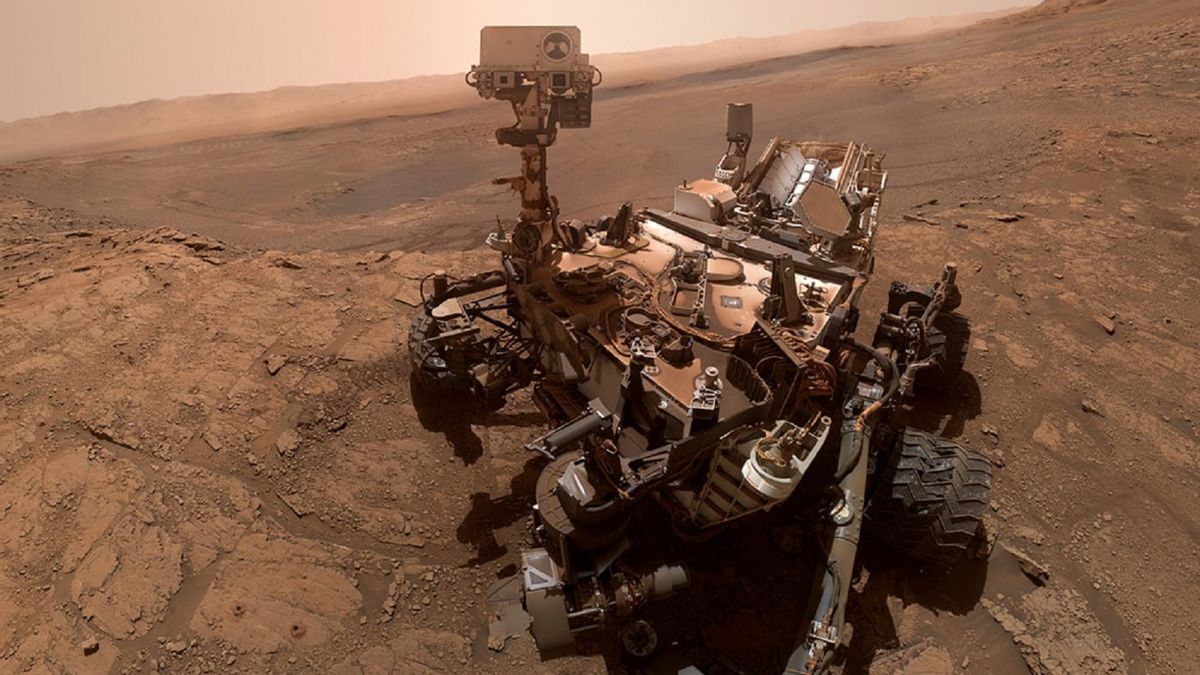JAKARTA - In the midst of the global COVID-19 pandemic, not a few of the major business and industrial sectors are implementing a work from home policy, including the team responsible for the Mars Curiosity rover, NASA. This aims to break the chain of spread of the virus in the United States (US).
Usually they work from NASA's Jet Propulsion Laboratory (JPL) in California, USA. However, scientists from JPL reveal how they adapted to work from living rooms and kitchens, even without access to some of the very high-tech equipment that is normally installed in their laboratories.
"We are all usually in the same room, sharing screens, pictures and data. People talk in small groups and each other from across the room, but this is different," said team leader NASA astrophysicist Alicia Allbaugh was quoted as saying from CNBC International.
Scientists are also required to be creative by making use of the various devices at their disposal such as monitors, headsets and other equipment, while video conferencing and chat applications are also used to keep everyone in touch with one another.

Of course this job is not easy, scientists must try to virtually replicate DNA and keep all the teams connected because every hour or two, they will plan daily maneuvers with spacecraft that are about 140 million away on Mars. miles from Earth.
In fact, they usually use 3D glasses to analyze images from Mars, this time they made an exploration without the tool. It is known, these glasses are like a VR headset, which requires a sophisticated computer to function properly.
Even so, they still use the simple red and blue lens glasses for the job. Although, less sophisticated and comfortable than laboratory glasses, it allows them to still explore Mars well.
Previously, Curiosity's Mars rover team, NASA had carried out rock dredging on March 20, at a site on Mars known as Edinburgh. Likewise, satellite images of the space agency continue to capture the astonishing sight of the Red Planet.
Some interesting findings were also made by the JPL team. It is claimed, this mission will continue even though the scientists cannot meet face to face to carry out this mission.
"We are faced with a problem and we are thinking of ways to make things work. Mars is not standing still for us. We are still exploring," said NASA's head of science operations, astrophysicist Carrie Bridge.
Meanwhile, next month NASA plans to launch its mission with SpaceX. However, on the one hand NASA administrator Jim Bridenstine urged and warned space fans to stay home during SpaceX's first historic astronaut launch.
Bridenstine has spoken publicly about SpaceX's upcoming Crew Dragon Demo-2 launch, and will be NASA's first mission to launch astronauts into space from US soil since the agency's shuttle program ended in 2011.
"Yes, we are moving forward (with Demo-2). We are excited to launch a commercial crew," said Bridenstine.
The mission, he continued, will restore NASA access to the International Space Station aboard American spacecraft, which is an important function of this mission.
But Bridenstine, asked space fans who normally watch such launches to stay at home because of social distancing concerns related to COVID-19
"We ask people to join us in this launch, but to do it from home. We ask people not to travel to the Kennedy Space Center later," explained Bridenstine.
The English, Chinese, Japanese, Arabic, and French versions are automatically generated by the AI. So there may still be inaccuracies in translating, please always see Indonesian as our main language. (system supported by DigitalSiber.id)










